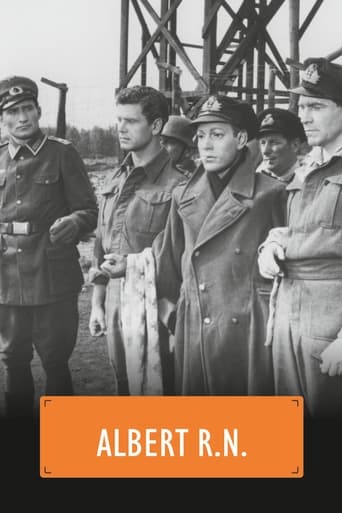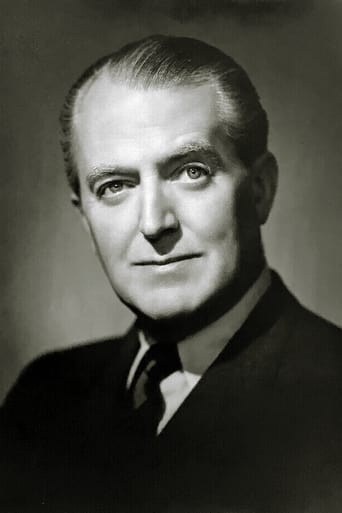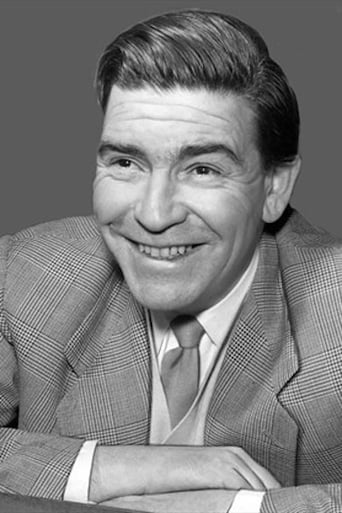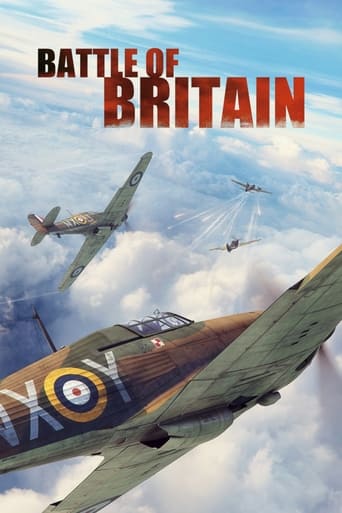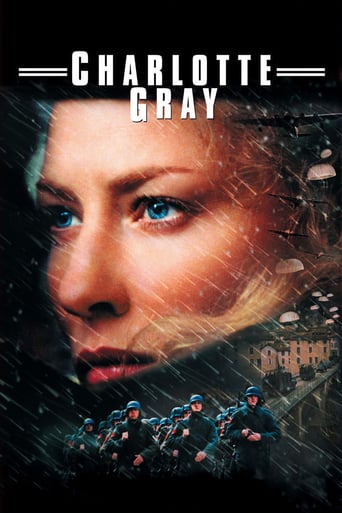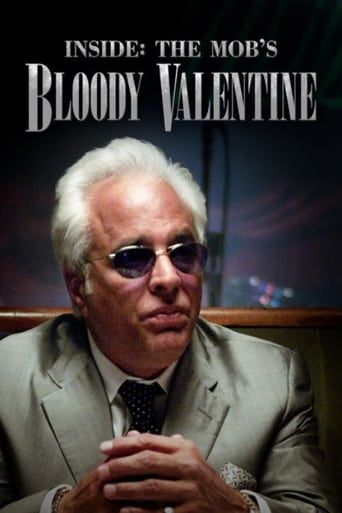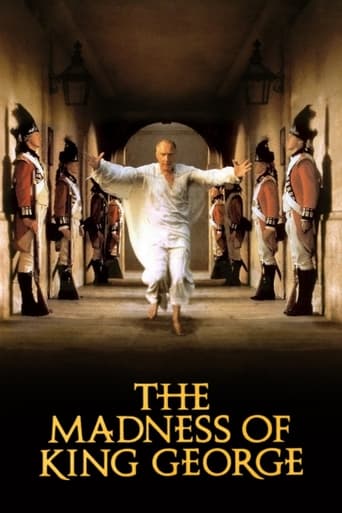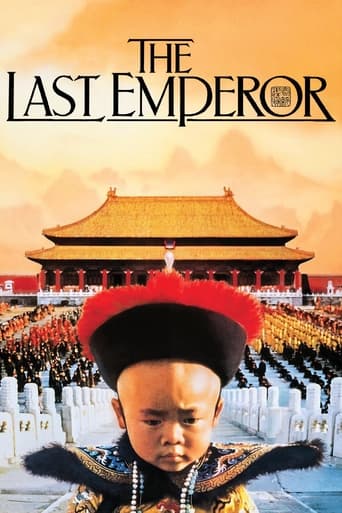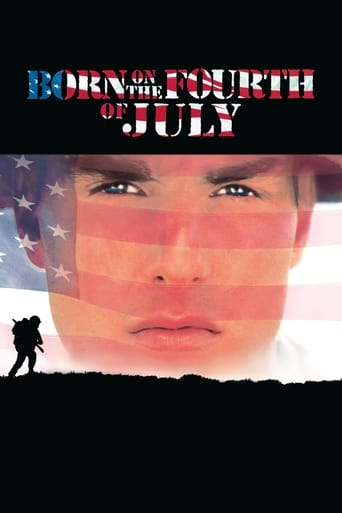Albert R.N. (1955)
The British inmates of a POW camp think they have an informer among them after several escape attempts fail. One of the prisoners constructs a dummy which they christen "Albert" and use at roll call in order to foil the German guards.
Watch Trailer
Cast


Similar titles
Reviews
It's not great by any means, but it's a pretty good movie that didn't leave me filled with regret for investing time in it.
Fanciful, disturbing, and wildly original, it announces the arrival of a fresh, bold voice in American cinema.
Yo, there's no way for me to review this film without saying, take your *insert ethnicity + "ass" here* to see this film,like now. You have to see it in order to know what you're really messing with.
Watching it is like watching the spectacle of a class clown at their best: you laugh at their jokes, instigate their defiance, and "ooooh" when they get in trouble.
"Albert, R.N.," aka, "Break to Freedom," is a very good British POW film set during World War II. The film opens with a prologue, "The events concerning Albert are based on fact, and took place in the prison camp, Marlag "O," for Naval Officers in North West Germany, during the spring of 1944." Indeed, two former POWs wrote a play about this POW camp and events, and the movie screenplay was based on that. The term, marlag, is an abbreviation of Marinelager (navy camp), and these were prison camps for sailors and naval officers. The "O" designation was for officers. The prisoners at this camp were mostly British naval officers, with some American and other U.K. naval officers. Marlag "O" was located near Hamburg, Germany, and in a couple of scenes of night Allied bombing, the POWs refer to Hamburg getting hit again. The Milag (internment) camps held the many Merchant Navy and Merchant Marine seamen. They were divided also between officers and men. Most of the 5,000 Allied merchant seamen rescued and captured by the Germans were held in Milag North. American shipment of war materials, supplies, and combat forces was all done by the Merchant Marine. The Marlag and Milag camps were about 1,000 feet apart, and between them was a large block of showers that was used by both camps.The characters in this story and film are fictitious, though they resemble some of the men who were at Marlag O. Anthony Steel plays Geoff Ainsworth, the artist who designed the mannequin face of Albert. He is patterned after John Worsley a war artist. Two British officers helped with Albert. One made the body and the other made it so Albert's eyes would blink and move. The real story came out different than this film shows. The first escapee (Lt. William Mewes) wasn't killed. He was recaptured and returned to Marlag. The second escapee was captured in the shower building, as shown in this film. There was no third attempt because the Germans discovered Albert and destroyed the mannequin.After the war, artist Worsley made another Albert for use in making this film. He also made another for an exhibition of his work, and it later went to the Royal Naval Museum at Portsmouth. In the movie, Lt. Fred Erickson (played by Paul Carpenter) says, "Nice work Geoff. After the war, you come to Hollywood. We've got just the job for you – making stars look like people." The film itself comes off a little stagy at times, but the compelling story keeps that from detracting from the film. This is a good historical movie because it shows a POW camp specifically for naval officers. The sea-going prisoners were treated quite differently than were the Army prisoners in the many regular POW camps.
In order to pass a head count or roll-call, even though one of their number is engaged elsewhere in an escape attempt, ingenious PoWs create a like-like dummy they name 'Albert'.The events in the film are based on real events in 'Marlag O', a PoW camp for naval personnel in Northern Germany. John Worsley -the only war artist to be captured during WWII- together with others including Lt JW Goble, created the first 'Albert' who was used in the course of two escape attempts. This 'Albert' was surprisingly sophisticated, even having eyes that were made from ping-pong balls, connected to a pendulum device so that they would blink.Worsley made a second 'Albert' for this film, and Goble worked on the film as a technical assistant.'Marlag O' was not the only PoW camp where such dummies were used; amongst others, dummies (named 'Moritz' and 'Max') were made and used in Colditz (Oflag IV-C). If you visit Colditz Castle today, you can see one of these dummies in the PoW museum there; less convincing by far than the one in the film, the one in the museum in reality worked well enough to pass 'Appel' on several occasions.Some aspects of the film are perhaps not so realistic; for example it was common for prisoner's huts to be bugged with listening devices, so in many camps any escape attempt discussions would only be carried out whilst 'exercising' outside. However the film makers did work to give the characters more than two dimensions; in one scene we see into the minds of the prisoners as they rest in a quiet moment; their hopes, dreams and prayers are each voiced in turn. Overall the film holds up well despite a relatively modest budget.This film might ultimately lack the 'hook' of 'The Wooden Horse' or 'The Colditz Story' but it is a pretty sound effort, and is worth seeing.
There were quite a few British POW films in the '50's, some better than others. For some reason, the real ingenuity of escape attempts were glossed over, what so occupied the POWs attentions and on which depended their happiness and their lives: how uniforms, documents, stamps, photographs, tools etc could be made by with apparently none of what was necessary to make them. The films were thus human stories which though lacked much of what had been so crucial to the men involved. Here though the heart of the film is Albert RN - the life-like full size dummy used to take the place of a prisoner - and the virtuoso performances of its summoning out of the air in seconds, and its disassembly and disappearance again in seconds. Also along with the dummy itself, the way it was deployed, the plans for avoiding discovery and the on the spot quick thinking needed if the unexpected happened (when perhaps a dozen POW had to wordlessly devise and implement a plan in the presence of the German guards). And Albert R.N. was not just brought out to deceive the guards on the day of the escape but every day for a week to delay discovery of the escaped prisoner. The other parts of the film are not quite up to par. Jack Warner did not convince physically as a serving naval officer, Anton Differing did his nasty Nazi once again (though who did it better?) but the marvel of Albert RN the dummy raised the bar and shone a light on the ingenuity, daring and skill of those who devised, built and operated him.
One of the better of the rash of pow camp films that came out of the UK in the late 1950's. The film is set in a Nazi pow camp where a group of Royal Navy prisoners come up with a novel means of escape. They produce a life-like dummy that breaks down into small pieces. Several of the men hide the pieces under their coats when they are marched outside the wire for the weekly shower. Once inside the shower room they put the dummy back together. While one man stays behind the rest march back to camp carrying the dummy between them. The guards take a head count which of course matches the number of prisoners who left earlier. The gag works and the Germans are fooled. Only problem is the escapee is caught and shot. They plan to keep pulling the same trick again till one of them makes good his escape. Director Gilbert keeps this one moving right along while getting the best out of the cast and crew. The prisoners include Anthony Steel, Jack Warner, Robert Beatty and Paul Carpenter. The best role in the film goes to Anton Diffring who does his best Nazi SS officer bit. Diffring made a career out of playing nasty German officers. Well done!(b/w)

